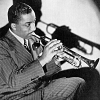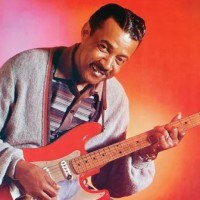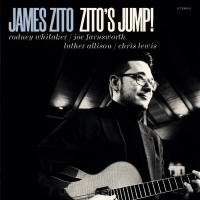Pee Wee Crayton was an icon and pioneer of modern blues guitar. With inspiration from jazz legend Charlie Christian and lessons from T-Bone Walker, Crayton helped define the emerging West Coast blues scene and electric blues guitar, and became a patriarch of both. In his heyday (late '40s to early '50s) his popularity was second only to his mentor, T-Bone Walker, and his success preceded that of Lowell Fulson, Gatemouth Brown, and B.B. King. Connie Curtis Pee Wee Crayton was born near Austin, Texas in Rockdale, on December 18, 1914. In 1935 he moved to Los Angeles. By World War II he was in the San Francisco Bay Area, an aspiring musician. There he supplemented the inspiration of jazz guitar trailblazer Charlie Christian with personal tutelage by a man who would be a close friend till his passing thirty years later, the original electric blues guitar master, T-Bone Walker. Crayton told interviewer John Breckow, "We got to be real good friends." According to another Pee Wee interview, T-Bone "showed me how to string up the guitar to get the blues sound out of it. T-Bone was gonna try to help me learn how to play. My timing was real bad. T-Bone helped me with my timing. He would play the piano or the bass and show me how to play in time." The two went on to stage friendly battles, and when T- Bone's health problems interfered with his gigs late in life, Crayton was on call to fill in whenever he was available. Pee Wee added some rawness to Walker's stylish blues approach, and chord knowledge gleaned from guitarist John Collins involving the use of four fingers. Pee Wee proudly stated, "I know how to play them big, pretty chords and where to put 'em at." After some obscure recordings as a leader and sideman (mostly for pianist Ivory Joe Hunter) in the Bay Area, Pee Wee hooked up with L.A.-based Modern Records. In 1948 he broke through with the classic moody instrumental "Blues After Hours" and followed with the equally definitive hits, the swinging "Texas Hop" and vocal ballad "I Love You So." Soon he was tearing up venues around the country with his flashy picking, power chords and grooves suitable for dancing or romance. Though his great Modern sides have been reissued thoughtfully in England and Japan, their unavailability in the U.S. is a major gap in the blues canon.
Read more
They and his personal appearances established Pee Wee as a stalwart of the emerging L.A. blues scene, and launched him as a formidable national presence. "I was the No. 1 attraction in the country for three years. I went across the country with a band that couldn't play five songs all the way through. Only thing I could play was the tunes I recorded. But, wherever I'd go, I'd draw a lot of people, because I was a good-looking man at that time. And very popular, you know, with the women anyway. So wherever women go, the men gonna be there." One man of note who was in the crowd for a different reason later was a certain Elvis Presley, according to musician Billy "The Kid" Emerson who took Elvis to hear Crayton at the Flamingo Club in Memphis: "Ah, man! Elvis thought that was somethin'. He'd never seen him before, and Pee Wee was good! Pee Wee Crayton was really good. And it learned him about stage personality, you know, he learned how to get around a stage and whatnot." In the 1950s Pee Wee's star faded somewhat. Los Angeles recordings for Aladdin and Recorded In Hollywood after he left Modern did him little or no good, and he moved to the Midwest (befriending a young Kenny Burrell in Detroit and giving lessons in Waterloo, Iowa) before golf hustling his way back to L.A. in 1960. But with the custom Strat guitar and Twin amp given to him by Leo Fender, he continued to make often scintillating records, most prolifically for Imperial in New Orleans ("Win-O" and "You Know Yeah") with Dave Bartholomew's crack band and for Vee-Jay in Chicago ("The Telephone Is Ringing") in similarly illustrious company. His wife Esther began to make her presence felt as a lyricist. After his return to Los Angeles, the next decade brought Pee Wee his least glorious musical period as he mostly drove a truck and played locally. A fine LP he recorded didn't even credit him, appearing under the name of "The Sunset Blues Band." The down home folk blues tastes of the international white blues boom didn't coincide with his relatively sophisticated approach. But by the decade's end, the vintage R & B which Pee Wee had helped popularize came in for belated recognition. Johnny Otis showcased Pee Wee in a memorable program at the 1970 Monterey Jazz Festival (issued on Epic), leading to a comeback LP on Vanguard, and later recorded an LP by Pee Wee for his Blues Spectrum label. Pee Wee continued to record sporadically and added some prestigious festivals and international tours to his resume. He lived comfortably in L.A. till his death in 1985, shortly after a Chicago Blues Festival appearance and a triumphant return to his home town at Antone's. There's a plaque in his honor where he used to feed the ducks at his favorite golf course. But till the end he was frustrated that he never got the accolades he felt his historical contributions warranted. Pee Wee's last two albums were recorded in Riverside, California for Murray Brothers, at the instigation of the label's A & R man, blues harpist deluxe Rod Piazza. Pee Wee relished the freedom and the chance to work with some veteran sidekicks and younger admirers like Rod and Honey Piazza ("I played a lot of places with Rod") and guitarist Doug MacLeod ("one of the best friends I got, and he's one of the finest guitar players you'd ever want to hear") and his band. His tone, energy and repertoire were up to the minute. [title] emphasizes Pee Wee's blues, boogies and R & B, with a couple recreations and the accent on instrumentals. Rod Piazza described the music as "a seasoned professional doing what he does best with no compromises." From the late night instrumental ambience of a revived and extended "Blues After Hours" and the extravagant vocal blues "When I'm Wrong I'm Wrong," through the rousing R & B of "Barefootin'" and a revisited "You Know Yeah" and the blistering uptempo instrumentals like "E.T. Blues," "Red Rose Boogie" and the Piazza feature "Head'n Home," Pee Wee and Blind Pig records have a reminder of his greatness for his longtime fans, and a wakeup call for a new generation. As the record “Early Hour Blues” affirms, what was once pioneering is now timeless as blues history and joyful listening!
Show less


































